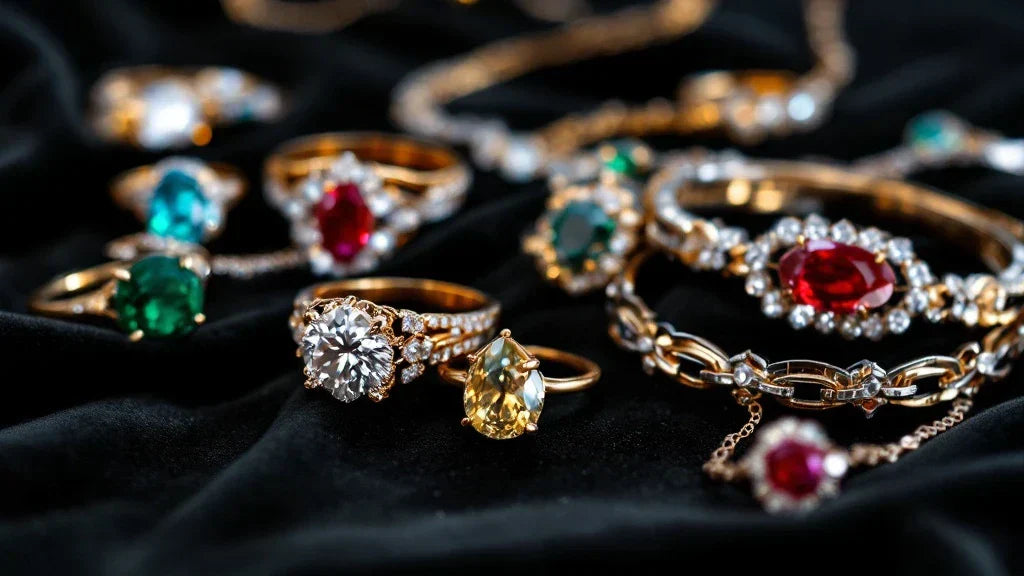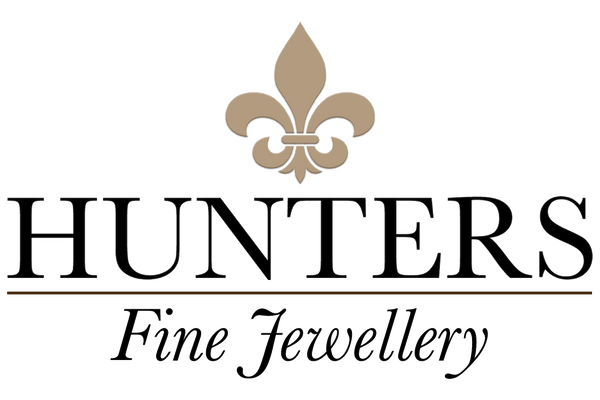
What is Fine Jewellery? UK Guide to Value, Craftsmanship & Buying Tips
Share
What is fine jewellery? Fine jewellery represents the highest standard of jewellery craftsmanship, using precious metals, natural gemstones, and exceptional artistry. Unlike fashion jewellery, which often relies on plated metals and simulated stones, fine jewellery is crafted to last a lifetime, offering both beauty and investment value.
Jump to Section:
- What is Fine Jewellery?
- Fine vs. Fashion vs. High Jewellery
- What Makes Jewellery 'Fine'?
- Why Buy Fine Jewellery?
- Care & Maintenance Tips
- FAQs
- Conclusion
What is Fine Jewellery?
Fine jewellery refers to jewellery made from precious metals such as gold (9K, 14K, 18K), platinum, and sterling silver (.925). It is typically set with natural gemstones like diamonds, sapphires, rubies, and emeralds.
Sterling Silver in Fine Jewellery
Sterling silver (.925 silver) is considered fine jewellery if it meets hallmarking standards and is paired with natural gemstones. Unlike silver-plated fashion jewellery, hallmarked sterling silver is durable and retains its value over time.
Explore our Sterling Silver Jewellery Collection
Fine vs. Fashion vs. High Jewellery

Fine jewellery includes timeless designs such as:
- Diamond Solitaire Rings – A classic engagement choice known for its elegance and durability.
- Gold Tennis Bracelets – Featuring a row of high-quality diamonds or gemstones set in gold.
- Pearl Necklaces – Often strung with genuine pearls, making them a sophisticated accessory.
- Bespoke Gold Pendants – Customised and handcrafted for personal significance.
| Aspect | Fine Jewellery | Fashion Jewellery | High Jewellery |
|---|---|---|---|
| Materials | Solid gold, platinum, sterling silver | Plated metals, base alloys | Rare gems, highest-quality metals |
| Gemstones | Natural gemstones (diamond, sapphire, etc.) | Simulated or glass stones | Extremely rare gems (e.g., pink diamonds) |
| Production | Handcrafted & machine-assisted | Mass-produced | Bespoke, one-of-a-kind pieces |
| Exclusivity | Limited editions | Trend-driven | Ultra-rare, collectors' items |
| Price Range | £100 - £10,000+ | £10 - £500 | £10,000 - Millions |
Explore Fine Jewellery Collections
What Makes Jewellery 'Fine'?
Gold in Fine Jewellery
Gold has been a defining material in fine jewellery for centuries, valued for its durability, rarity, and timeless appeal. Whether in 9K, 14K, or 18K, gold's purity and colour impact its strength and value. Understanding gold's properties helps buyers make informed decisions when choosing fine jewellery.
Learn more about gold and its role in fine jewellery
Materials & Hallmarks
- Gold: 9K, 14K, 18K (Hallmarked in the UK).
- Platinum: Strong, naturally white, tarnish-resistant.
- Sterling Silver (.925): Hallmarked, often rhodium-plated for durability.
Craftsmanship & Artisan Techniques
- Stone Setting (prong, bezel, pave).
- Engraving & Filigree Work.
- Hand-finishing vs. machine-made jewellery.
Gemstone Authenticity & Certification
- Natural vs. Lab-Grown Diamonds (GIA-certified).
- Precious vs. Semi-Precious Stones.
- Certifications (GIA, AGS, RJC compliance).
Why Buy Fine Jewellery?
Investment & Heirloom Value
Fine jewellery appreciates in value and is often passed down as a family heirloom. Pieces made from solid gold, platinum, and rare gemstones retain their worth over time.
Customisation & Bespoke Jewellery Design
- Engraving, unique gemstone selection, personalisation.
- Custom-made fine jewellery as a meaningful gift.
Ethical Sourcing & Sustainability
- Lab-grown gemstones as an ethical alternative.
- Recycled gold and carbon-neutral production.
Care & Maintenance Tips for Fine Jewellery
- Store in a lined jewellery box to prevent scratches.
- Clean with a soft cloth and appropriate solutions.
- Avoid harsh chemicals that can damage metals and gemstones.
- Consider professional cleaning for high-value pieces.
FAQs (Frequently Asked Questions)
What is classed as fine jewellery?
Fine jewellery is made from gold, platinum, or sterling silver and set with natural gemstones.
Is sterling silver considered fine jewellery?
Yes, sterling silver (.925) is considered fine jewellery if it meets hallmarking laws and contains natural gemstones.
Can fine jewellery be worn daily?
Yes, but durable designs (e.g., bezel settings) are best for daily wear.
Are lab-grown diamonds fine jewellery?
Yes, if they meet GIA certification standards and are set in precious metals.
How do I care for fine jewellery?
- Store in a lined jewellery box to prevent scratches.
- Clean with a soft cloth and appropriate solutions.
- Avoid harsh chemicals that can damage metals and gemstones.
- Consider professional cleaning for high-value pieces.
Conclusion
Fine jewellery is more than just an accessory—it's an investment, an heirloom, and a form of self-expression. Whether you're looking for a gold or sterling silver piece, understanding these quality markers ensures you're making a smart purchase.

